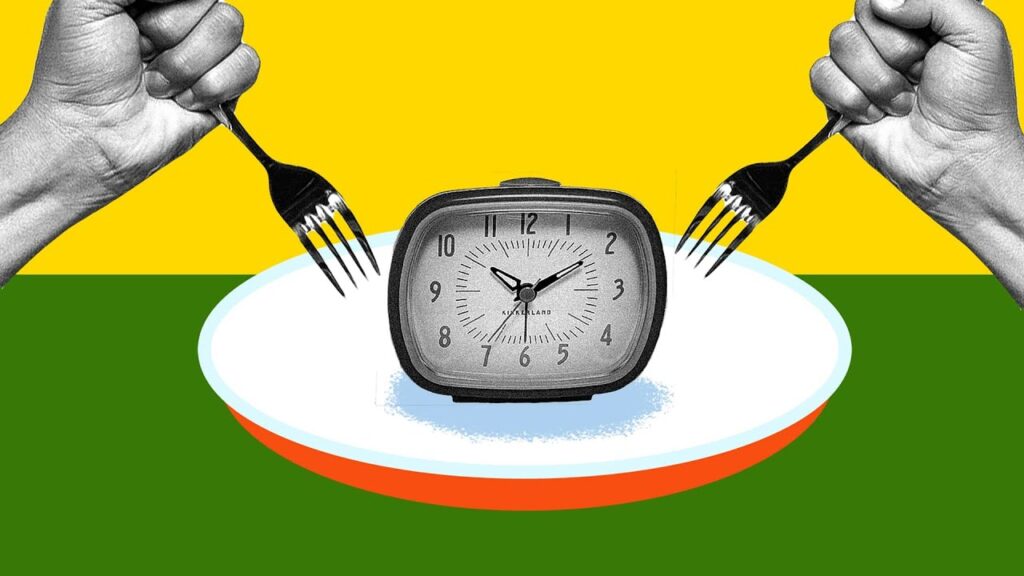Interval fasting is a topic that has been actively discussed in the last 2-3 years. A unique method of weight loss, based on periodic regular refusals from food. The technique is used to reduce weight and normalize overall well-being.
What is interval fasting?
Interval fasting is understood as a special nutrition program, in which meals are strictly scheduled in time.
Several types of interval fasting have been developed, from which you can choose the appropriate one.
14/10 and 16/8 are the most popular versions of the program. The first number indicates the time period when you don’t eat. The second – the period when the food is allowed.
Some programs contain daily intervals that imply a whole day without food. A person once a week should be without food for a day, taking but with abundant drinking.
The human body has special mechanisms that allow you to periodically starve: the accumulation of glycogen, fat, the synthesis of glucose from amino acids, the effect of hormonal substances, the depletion of fat reserves.
The essence of interval fasting
A 2016 study, “Fasting, Circadian Rhythms, and Interval Eating for Health and Longevity,” suggests that people are becoming more “autonomous,” their bodies no longer rely on glucose for energy, and are free to use their own fat.
The task of fasting is to master the source of fuel, the supply of which we have in excess. The body begins to create glucose from improvised materials, and not to require new and new food for this.
Physiological mechanisms of interval fasting
During interval fasting, insulin decreases, fat-releasing hormones are activated, triglycerides float out of fat depots (adipocytes) and are broken down into fatty acids and glycerol.
New glucose is synthesized from glycerol, and fatty acids provide the body with energy during the period without food.
So you lose weight, there is absolutely no hunger, sugar is stable, and all this is simply because you have developed the habit of staying without food for a long time.
Reduction of oxidative stress
The most active exploitation of the body is nutrition and physical activity.
In both cases, a lot of decomposition products are formed as a result of serious metabolic processes involving oxygen. Coping with free radicals is difficult when exploitation is always at its maximum. This is the oxidative damage.
A pause in food is a respite in the work of the stomach, intestines, liver, kidneys, and pancreas.
How to practice?
You can test yourself and look for the most convenient break during the day. It may be convenient for you to just have breakfast at 12.00. Or perhaps finish all the day’s meals early.
Just analyze your daily routine and you will see what time gap is convenient for you to fast.
It seems to me that it is optimal to make three meals from 10.00 to 18.00. This will be 16:8 program.
I would choose high protein and sugar-free food, because sugar creates jumps in appetite.
Protein and fiber, on the other hand, make it easy to forget about food for a long time.
Interval eating benefits
1. Weight loss.
This process accelerates fat burning and helps you successfully lose weight without strictly following the layout of proteins, fats and carbohydrates, as with a normal diet.
When we eat constantly, the body primarily burns glucose as an energy source.
When we pause, the fat starts to be used.
2. Lowering the level of insulin and blood sugar.
With interval fasting, in most cases, blood sugar spikes stop, and the situation with insulin, cholesterol, and other metabolic markers improves.
A big plus of fasting is the restoration of insulin sensitivity.
3. Heart protection.
Interval nutrition reduces the risk factors for cardiovascular diseases.
A study published in the Journal of Nutritional Biochemistry found that interval fasting causes an increase in adiponectin levels. Adiponectin is a protein involved in the metabolism of fat and sugar and protects against heart disease.
4. Reducing the level of inflammation.
Chronic inflammation is usually associated with metabolic syndrome, heart disease, diabetes, and obesity.
5. Protecting the brain from dementia.
Pauses between meals deactivate certain proteins involved in the aging process of the brain.
Improves memory, increases the ability to learn.
6. Appetite control.
This mechanism is linked to leptin, the satiety hormone. It is produced by fat cells and sends a signal to the brain to stop absorbing food.
Interval feeding normalizes leptin levels and returns the brain’s sensitivity to its signals. You eat your fill on time.
Contraindications
If you suffer from eating disorders, bulimia and compulsive overeating, then you should refrain from fasting.
People with reduced thyroid function are not recommended to follow fasting programs. Any problems with the thyroid gland suggest that you need to eat regularly, because thyroid hormones are extremely sensitive to food experiments.
Do not start abruptly following the program. It is necessary to gradually accustom the body to reduce the amount of food. If you want to follow the system for a long time, it is better to consult with doctors.

